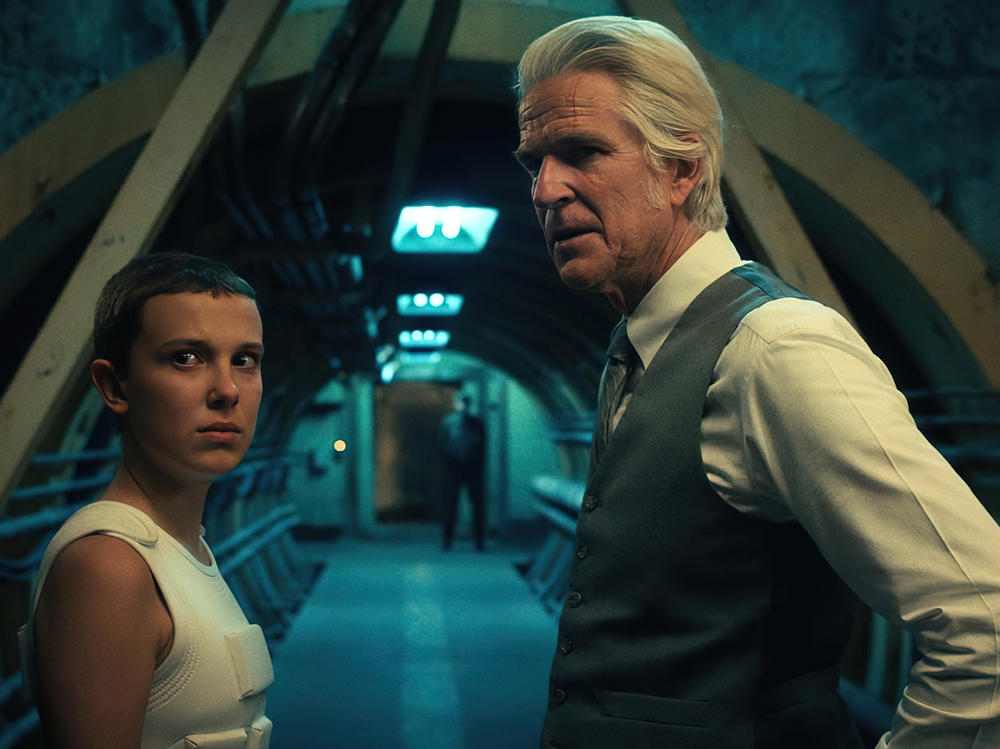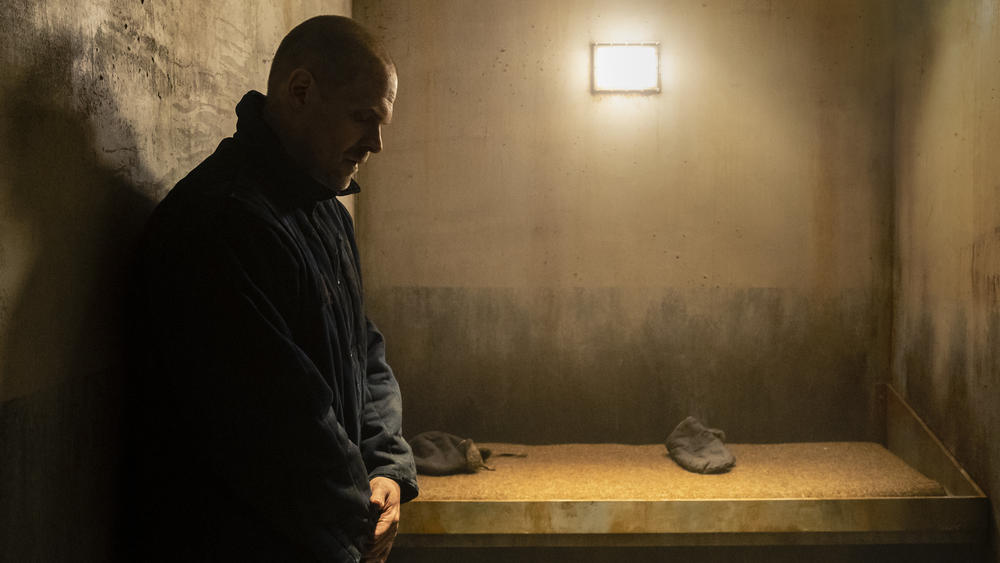Section Branding
Header Content
'Stranger Things' season finale succeeds by leaning into excess
Primary Content
One of the toughest things for an established TV show to do is surprise you.
Specifically, to surprise by revealing something new about characters fans think they know, after years of watching episodes and growing attached to their favorites.
That's a big reason why I have so enjoyed this fourth season of Netflix's monster hit Stranger Things. And it's why the last two episodes, dropping today, amp up the energy of an already propulsive season, revealing the full scope of the danger our heroes (and heroines) face while highlighting new complications among them all.
The show has always turned on an improbable premise: A nerdy gang of young kids keeping horrible creatures from an alternate universe from consuming our world — with help from a few bumbling adults. That core crew — teen buddies Mike, Dustin, Lucas and Will — has expanded every season and is now an endlessly eccentric gang that feels like every underdog from every '80s teen flick jammed into one bustling storyline.
For its fourth season, the series has more than doubled down on just about everything — building out the show's fictional universe, adding engaging new characters and setting up a bombastic showdown for these last two episodes that offers its biggest spectacle yet.
The show's new Big Bad – a disgusting assembly of decayed flesh and tentacles named Vecna – has been killing young people from the alternate dimension known as the Upside Down, and the show's growing crew of young protagonists need to take him down. Eventually, they realize they must work from multiple locations, including from within the Upside Down itself, to try to defeat him.
Fans online have feverishly traded theories about these last two installments — episodes eight and nine — which include a whopper of a season finale clocking in at more than two hours long. Questions abound: Does an important character die (with lots of fans putting money on Joe Keery's underachieving, magnificently coiffed dreamboat Steve Harrington)? Does a certain kid with a bowl-cut hairstyle reveal feelings beyond friendship for his boyhood buddy?
Most importantly, is this season's story really worth a final episode longer than some feature films?
Relax. I won't reveal the answers to most of those questions. But I will note they are answered in the episodes just released, which also continue the series' unerring knack for wrapping up one world-threatening crisis while unveiling the seeds of the next one, due to unfold in the show's upcoming fifth and final season. And yes, this last, supersized episode is well worth the time.
Final episodes score by taking big swings
I'll avoid obvious spoilers here, but there will be some talk about details from the first seven episodes Netflix released in May. That fractured release strategy seems to have worked as intended — keeping fans buzzing about the series for weeks, anticipating the season's end and maintaining Stranger Things' high rank among the 10 most-watched U.S. TV shows on the service. It's also Netflix's most-watched English language show.
The show's creators and showrunners known as the Duffer Brothers — Ross and Matt — took a big swing at the beginning of the fourth season, using a tactic often employed by TV shows where you have a close-knit group of characters who have been together a while. You separate them.
And boy, did they separate them. Super powered, psychokinetic telepathic kid Eleven, played by Millie Bobby Brown, lost her powers and moved to California with Winona Ryder's Joyce Byers and her sons Will and Jonathan. Dustin, Lucas and Mike, along with the other kids who helped foil an apocalypse together last season stayed in Hawkins, Ind. – a fictional town that never seemed much like an actual Indiana town to this native Hoosier. David Harbour's depressive sheriff Jim Hopper was stuck in a Russian prison, thought dead until Joyce found out differently earlier this season.
To make all that work, the Duffers have balanced a multitude of storylines taking place in at least four different locations — a situation that only ramps up further in the last two episodes. As the eighth episode opens, Eleven has left California for a secret facility with the doctor who originally raised her and helped develop her abilities, Matthew Modine's ruthless researcher Martin Brenner.
He's one of the established characters who becomes even more compelling here, as we learn new details of his backstory with Eleven — she calls him Papa, the title of the eighth episode — while she works with him to regain her powers and take on Vecna.
These episodes work by embracing all the excesses that would drown a typical series, from absurd plot twists — like Joyce teaming with a conspiracy theorist friend of Hopper's to rescue him from that Russian prison — to characters somehow finding each other exactly when they need to, on-the-nose homages to classic horror films like Nightmare on Elm Street or Halloween and bombastic, effects-filled action sequences.
There is a lot of mayhem in this season. Famously, the show had to put a warning on its first episode, which dropped days after the mass shooting at Robb Elementary School in Uvalde, Texas, in May and featured the slaughter of children who grew up in the facility with Eleven.
But despite all the death, you rarely get the sense that the show's core characters are at serious risk, despite the many threats they face. Stranger Things flirts with that idea in these final episodes, in a way that raises the stakes without violating the show's central conceits.
Problems with the "confessional monologues"
Even with two inflated episodes, the Duffer brothers have a lot of narrative ground to cover in these last installments. So they resort to a device I'm going to call the "confessional monologue" — where one character turns to another and neatly, emotionally explains exactly the problem in their relationship, admitting their part in it and promising to do better.
This is something that happens often in the final episodes. And as satisfying as it can be for viewers to see these characters stop acting like knuckleheads and actually talk to each other, it also feels like a crutch — allowing the story to skip ahead into emotional resolutions that aren't fully earned.
In one case, the confessional monologue is between two characters — I won't name names — who vow to be more open with each other. Then they proceed to move onto the emergency at hand without actually talking about the emotional issue that prompted the confessional in the first place. Sigh.
Still, there is a lot I liked about the character development here. The deepening relationship between Hopper and Joyce. Steve Harrington's efforts to transcend his womanizing. The odd triangle between Will, his friend Mike and Mike's girlfriend, Eleven.
And it was surprisingly powerful to see these far flung groups of friends finally reunite in a bittersweet resolution.
I have no idea how the Duffer brothers are going to match what they pulled off in this season for their fifth and final run (they even reintroduced '80s icon Kate Bush to a whole new legion of fans). But I can't wait to be surprised by this inventive and bold series yet again.
Copyright 2022 NPR. To see more, visit https://www.npr.org.


